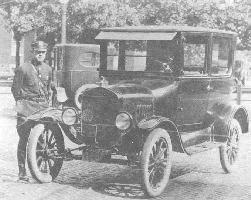
| Eric Arnum, Editor | |
On the Advice of an Attorney:Used Auto Dealers Make an Effective Case Before the FTCThe Federal Trade Commission, seemingly reversing itself and contradicting a growing amount of casework at the state level, has told the attorney for a used auto dealer association that split-cost warranties are permissible, even when they require the buyer seeking service under that warranty to bring their car back to the dealer that sold it to them. At issue is the so-called tie-in prohibition of the Magnuson-Moss Warranty Act, which makes it illegal for a warrantor to require the buyer to make an additional purchase in order for the warranty to remain effective. But also at issue is the nature of the split-cost warranty itself, which consumer advocates say is subject to potential abuse because the warrantor gets to decide the total cost, and therefore the amount to be split. Request for Clarification
Consumer advocates were using as precedent some comments made by the FTC during a 1999 Congressional review of the Warranty Act. But in crafting his argument, Whann cited an even older precedent. He pointed out to the FTC that their own 1998 publication, "A Dealer's Guide: The Used Car Rule," states that the warrantor must disclose the percentage of parts and labor that will be covered under a limited warranty. It even discusses dealers offering 50 percent coverage for parts and labor.
The Dealer's Guide, Whann wrote, "states that dealers may disclose the percentage of parts and labor that will be covered under a limited warranty, and even discusses dealers offering 50% coverage for parts and labor. On the same form, the dealer is required, by statute, to: (i) identify the name and address of the dealership and the name of the contact person for warranty related questions; and (ii) instruct the consumer to see the contact person for warranty related complaints. For over twenty-five years, this requirement has been interpreted to mean that the dealer may require the consumer to pay a portion of the repair charge and the dealer is the entity that the consumer should look to for performance of the warranty services." In other words, the FTC said percentage splits are OK, and tying the repairs to the warrantor's shop is OK. Therefore, if one were to connect the dots provided by the FTC, one could conclude that split-cost warranties that tie the repairs to the seller's shop are OK. And that's exactly what the FTC concluded. Remedies for OverchargingHaving established to the FTC's satisfaction that their own publications at least indirectly permitted 50/50 warranties, Whann next moved on to the core objection raised by consumer advocates, namely that captive split-cost warranties encourage overcharging. "One of the primary concerns being expressed by plaintiffs’ attorneys, consumer advocates and some regulators is that if limited warranties with less than 100% coverage continue to be offered, motor vehicle dealers have an incentive to artificially inflate the cost of repairs," Whann wrote. "For example, if the total cost of a repair would normally cost $200, the dealer and the consumer would each pay $100 under a 50/50 limited warranty.
Furthermore, by those same Federal and State Laws, consumers are typically given a written estimate of repair costs ahead of time, so if their 50 percent share sounds inflated, they can always go elsewhere, Whann advised. "A motor vehicle dealer cannot alter its prices for labor and parts after it discovers that a consumer is requesting that the repairs be performed pursuant to a limited warranty," he wrote. "State Unfair and Deceptive Acts and Practices (UDAP) Statutes and Motor Vehicle Repair Rules further protect consumers by affording them the right to receive a written estimate of the anticipated cost of the repairs prior to commencing the repairs." Dire Consequences Predicted
See Also: |
|
|||||||||||||||||||||||||||||||||||||||||||||||||||||
 In April 2002, a letter written by Keith Whann,
counsel for the
In April 2002, a letter written by Keith Whann,
counsel for the  The point is, he said, the FTC's own 1998 guide
book, of which 125,000 copies were printed and
distributed, tells used auto dealers how to offer
50/50 warranties that comply with disclosure rules.
The point is, he said, the FTC's own 1998 guide
book, of which 125,000 copies were printed and
distributed, tells used auto dealers how to offer
50/50 warranties that comply with disclosure rules.




